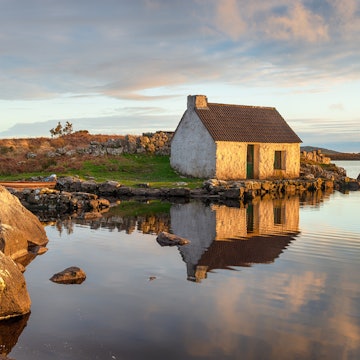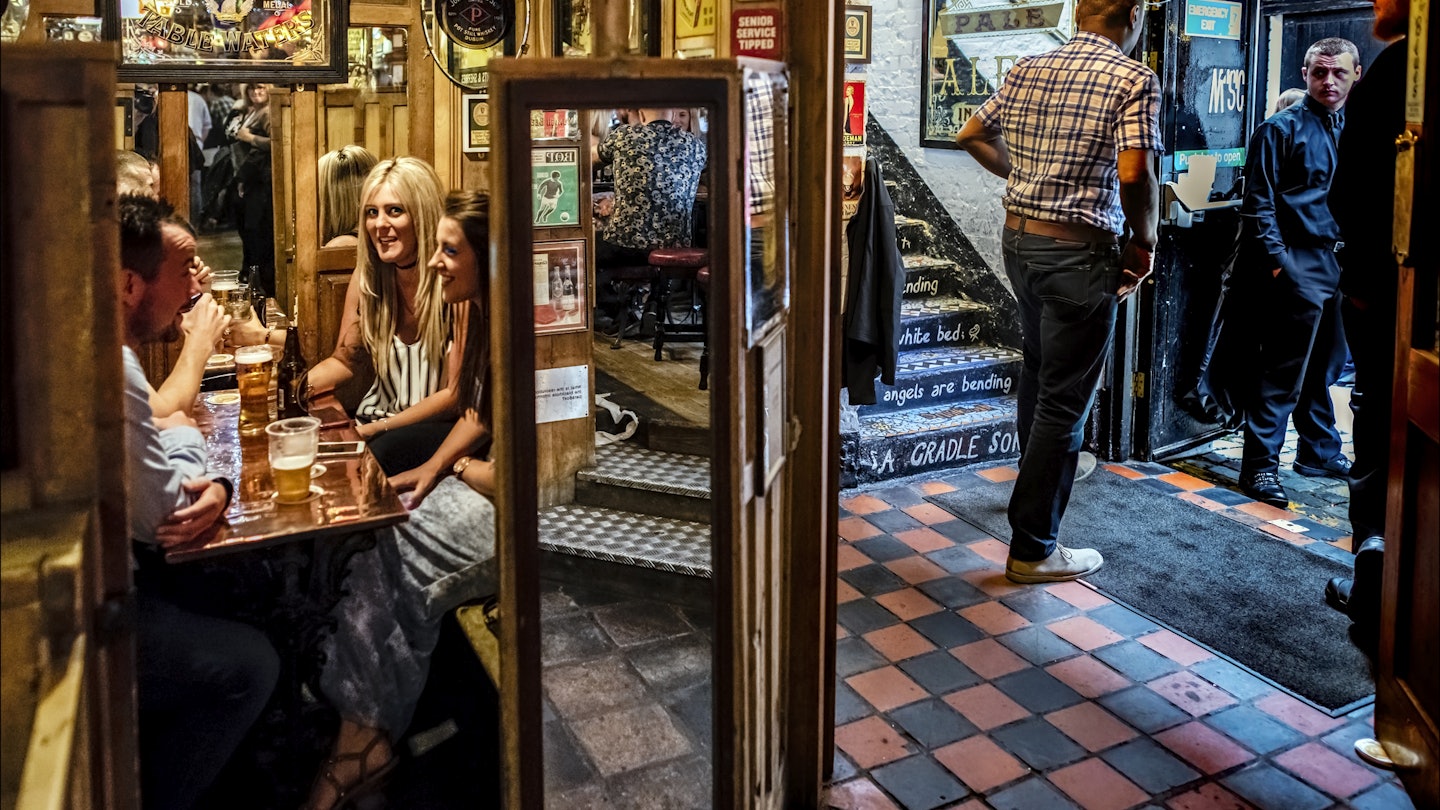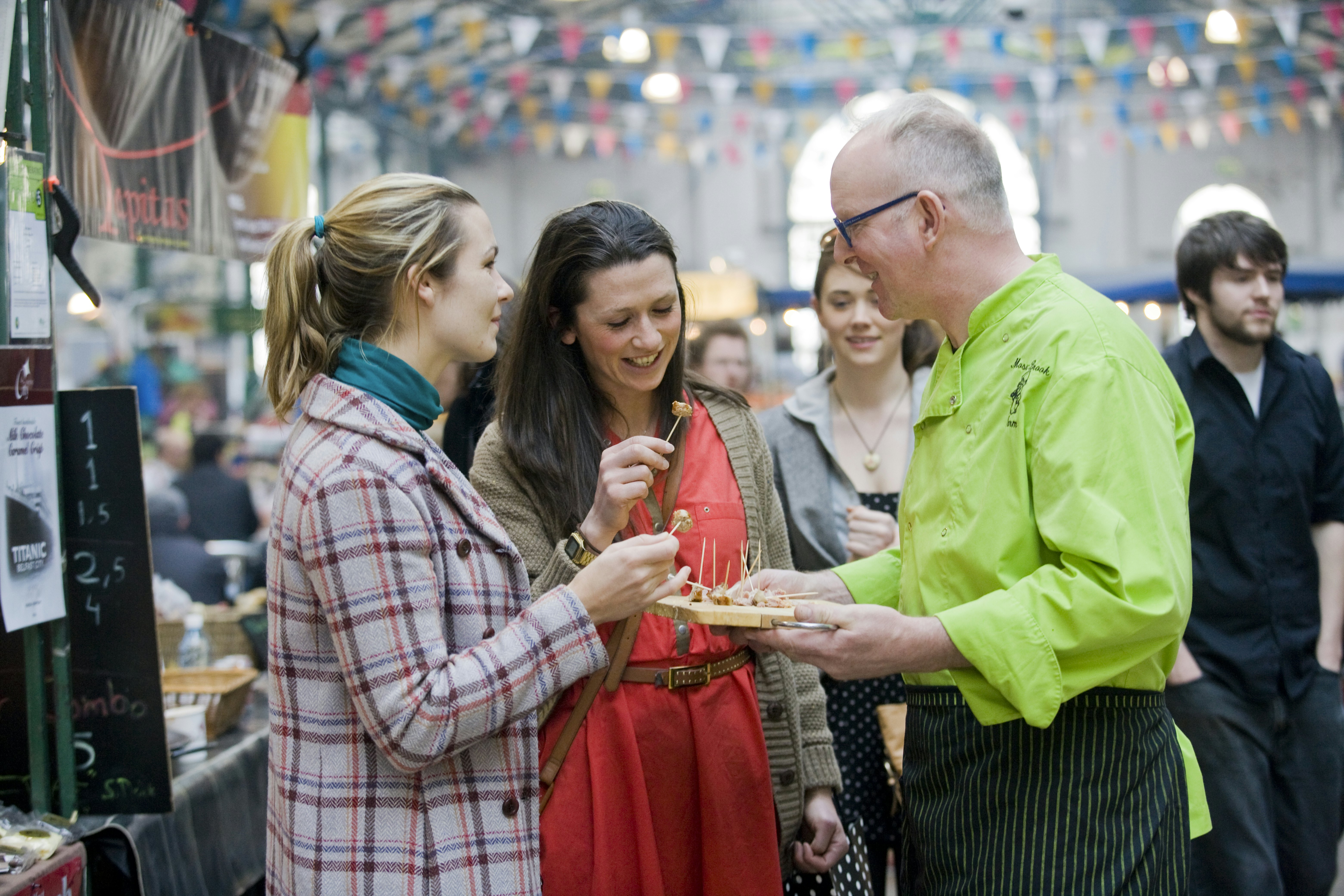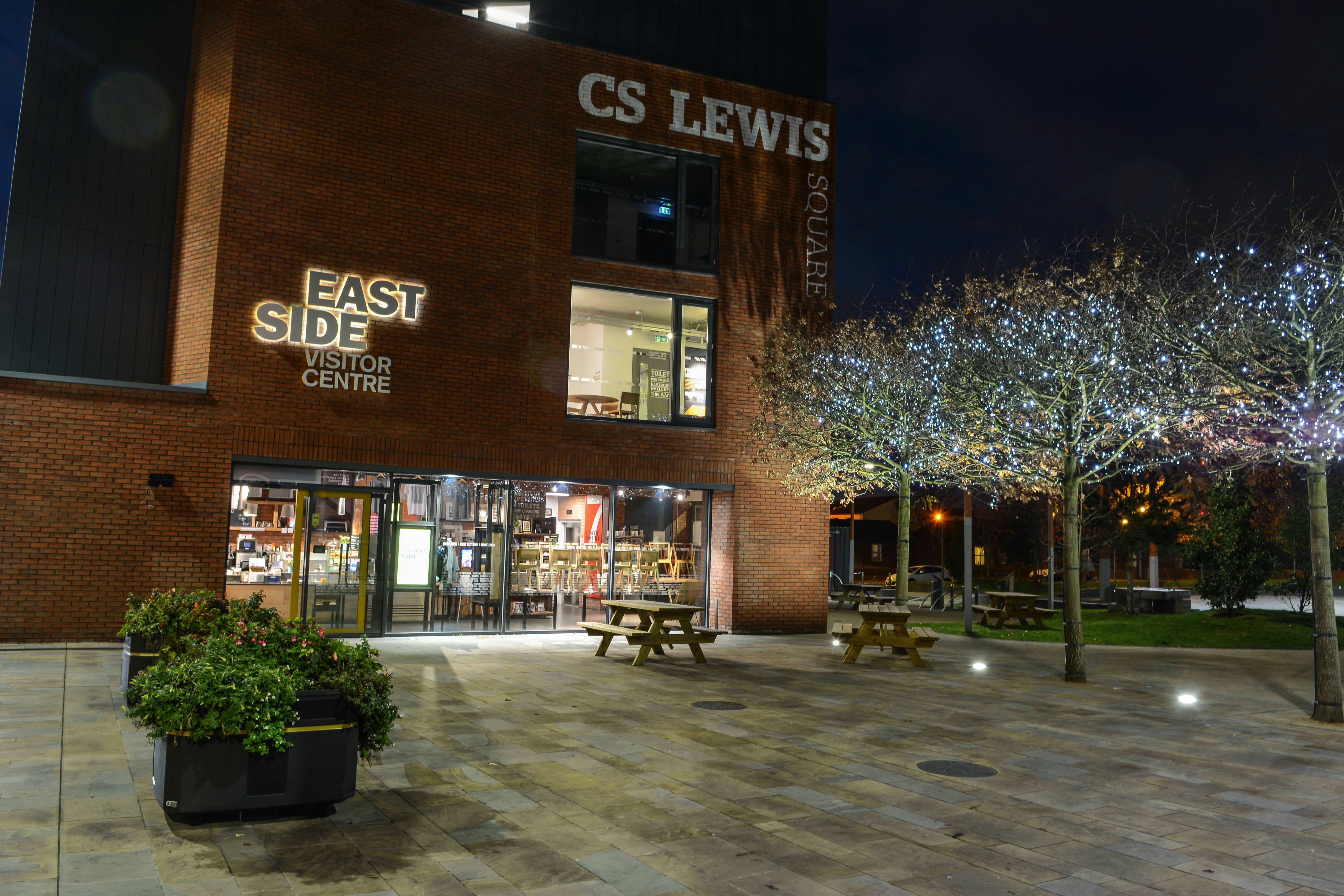
The 5 best neighborhoods in Belfast for cozy pubs and local grub

Jul 29, 2022 • 9 min read

Get comfy in a snug at the Duke of York and enjoy the endless craic to be had in the Cathedral Quarter © Steven Rayner / Getty Images / Corbis Unreleased
Whether you want to delve into the local history, embrace the thriving arts scene, swill Guinness with merry locals, or admire its fusion of architectural styles, the capital of Northern Ireland has a welcoming neighborhood to suit your style.
Though Belfast was not the safest place to visit (or live) in the latter half of the 20th century, the signing of the Good Friday Agreement in 1998 has seen it become an increasingly safer and dynamic travel destination. The locals love to show off their hometown – no matter what you're looking for, you'll find it in our guide to the top five Belfast neighborhoods.
Cathedral Quarter: best neighborhood for nightlife and the arts
The Cathedral Quarter, on the fringes of Belfast city center, takes its name from St Anne’s Cathedral, an early 20th-century Romanesque Revival edifice characterized by its rounded arches and turrets. Like many of the buildings near central Belfast, the cathedral was built on the foundations of a silty river basin, known as “sleech”, which meant a traditional bell tower was deemed too heavy for the structure. Rather, in 2007, the glinting white Spire of Hope was added on top of the cathedral as a symbol of sociopolitical progress in post-Troubles Belfast.
The architecture is reason enough to make your way to the Cathedral Quarter, but it’s more likely the bars will make you want to stay. Centered around a cobblestone pedestrian street, whose walls are perforated with charming pubs and speakeasies, the quarter comes alive after dark. If you’re lucky enough to find a table in the Duke of York, it’s a classic Northern Irish watering hole, with a 200-year history, lively local clientele, and a riot of memorabilia from the nine counties of Ulster clinging to the walls. The Harp Bar, the John Hewitt, and the National are all good options for pints of stout, live music and exuberant atmospheres.
For a hearty repast to accompany your beverages, the Dirty Onion and Yardbird is renowned for its rotisserie chicken and racks of ribs, while the Thirsty Goat has a menu of Belfast classics, including Irish stew, fish suppers, and bangers and mash. If you want to elevate your dinner further, reserve a tasting menu at the Muddlers Club, one of only three restaurants in the city to hold a Michelin star.
The arts are central to the Cathedral Quarter too, best epitomized by the Umbrella Passage mural, portraying famous local faces crowded around a table under a canopy of umbrellas. To experience the thriving arts scene, check out what’s on at the Black Box for music and stand-up comedy, or the Modern Arts Center, better known as the “MAC”, for art exhibitions and experimental theater. Nearby Custom House Square is another popular music and concert venue throughout the year and is worth a visit to get a good view of the sandstone Albert Memorial Clock. At 43 meters tall (141ft), it’s by no means a skyscraping behemoth, though it has notably succumbed to Belfast’s marshy foundations. Leaning four feet off the perpendicular, it gave rise to the quip: “Albert Clock has both the time and the inclination.”

City Center: best neighborhood for shopping, markets and architecture
The city center unfurls outwards from Belfast City Hall, arguably the Northern Irish capital’s finest architectural glory: a Baroque-inspired building of Portland stone, surmounted by mint green domes and festooned with religious iconography. First opened in 1906, Belfast City Hall is the civic center of the city and home to the Lord Mayor’s office – public tours of the marbled interior are available. Fronted by two lawns, the Titanic Memorial Garden and the Garden of Remembrance, it’s also a great spot for lounging on clement afternoons. But it’s at its peak during the Christmas Continental Market when beer tents and twinkling chalets serve up food and drink from the European continent.
The city center is the premier shopping zone in the city. For brand names, head to Victoria Square, a semi-open-air shopping center topped with a glass dome that offers views of the surrounding cityscape – a fusion of repurposed Victorian, Edwardian and Georgian buildings – Belfast harbor, and on clear days, as far as the Mourne Mountains. If you’d prefer something a little more bohemian, St George’s Market (open Friday through Sunday) hosts local vendors peddling handmade crafts, quirky garments, Celtic jewelry, and Belfast baps (crusty white bread rolls filled with local breakfast food).
The Linen Hall Library, Belfast’s oldest library first opened in 1788, is worth a look. An archival feast for historians, it hosts 250,000 items in the Northern Ireland Political Collection, collections of works on Belfast’s Anglo-Irish heritage, sepia-tinged tomes predating Shakespeare, as well as a first edition copy of Joyce’s Ulysses and the first printing of the Declaration of Independence outside the US. Or you could book a show at the Grand Opera House. Fresh off a 2021 restoration project, which refitted its main auditorium, it sets the stage for pantomimes, world-renowned musicals and popular works by local playwrights.
And while Belfast is still a relatively cheap destination by western European standards, budget travelers and backpackers should note that the most affordable hostels are within striking distance of the city center – Global Village and Vagabonds come highly recommended.

Titanic Quarter: best neighborhood for history, walking and family outings
Thanks to one of the largest urban waterfront regeneration projects in Europe, Belfast’s Titanic Quarter – nestled by the docks where the eponymous and ill-fated sea liner was constructed – has burgeoned into one of its most popular neighborhoods. Kick off your day with a visit to Titanic Belfast, an interactive museum that details the storied history of Belfast and the tumultuous trajectory of the RMS Titanic, from drawing board conception to iceberg collision. If the excursion doesn’t quench your thirst, you can nip into Hickson’s Point for a Guinness next door, indicated by the glaring Docker’s Rest mural slapped across its exterior wall.
Samson and Goliath, the twin yellow cranes in Harland and Wolff shipyard where the Titanic was built, remain a dominant component of Belfast’s skyline; you’ll get no better sense of their grandeur than from the Titanic Quarter. The Maritime Mile walk sits in view of the cranes and guides amblers past the Salmon of Knowledge mosaic artwork, the 130-year-old Great Light maritime object, the Titanic Dock and pump house, and the SS Nomadic – the last ship built by the White Star Line shipping enterprise. You can also stay in the Titanic Hotel Belfast, residing within the gentrified Harland and Wolff Drawing Offices. Over 500 artworks and photographs are dotted throughout the building, giving guests a visual history of the Golden Age of Ocean Travel. Whilst here, spend an evening indulging in seafood and cocktails at the hotel’s chic bar, Drawing Office Two.
Opened for the new millennium, the nearby Odyssey Complex is a great place to take the kids. Though some would argue it paled into insignificance in the 2010s, it has been given a new lease on life. W5 is a science and discovery center, with two revamped exhibition spaces that encourage interactivity as it educates visitors on everything from climate change and nature to optical illusions and medical sciences. And be sure to check the Odyssey SSE Arena's events calendar for big-name concerts, live events and Belfast Giants ice hockey matches.
Ormeau: best neighborhood for cafes and pubs
Gentrification has been common in post-Troubles Belfast, and perhaps nowhere has benefited more from it in recent years than the Ormeau (pronounced “or-mo”) Road. One of the major arteries running south from Belfast city center and hugging the southwest fringe of the 100-acre Ormeau Park, it’s lined by urbane cafes, cozy pubs and cosmopolitan bistros.
Among the foreign food fare is the nordic coffee house Kaffe O, serving sumptuous brød sandwiches. Funky La Taqueria Ormeau has an authentic Mexican menu of tasty tacos and sharing bites, while the bold flavors of the Indian subcontinent shine at Bengal Brasserie. Cafes specializing in flavors closer to home have exploded in popularity too. The General Merchants is a millennial haunt, serving all-day brunches that speak to its hipster inspirations. Shed Bistro is a chic lunch venue, though you may prefer to reserve the three-course dinner special on “Steak Wednesdays”. And while you won’t be able to grab a table at Indie Fude, it's a must-visit for the cheeseheads, celebrating the best of Irish cheese in its takeaway treats.
The bars on the Ormeau Road are among the best in the city. The Parador Inn is defined by a cozy, rustic interior, and is frequented by locals blowing off steam after a day’s work. The Pavillion Bar, known colloquially as the “Big House”, is the pick of the bunch for watching live sport, with TVs scattered around its various floors and a collection of pool tables in the third-floor Loft. The Errigle Inn is a charming quintet of bars with a rotating menu of 20-plus beers on tap. It gets busy when Ulster, the local rugby team, kicks off at the nearby Kingspan Stadium, though you might find some reprieve in the “Back Bar”, a popular haunt among actors after the curtain comes down on shows at the Lyric Theatre.

East Belfast: best neighborhood for hidden local culture
East Belfast has had its fair share of district rejuvenation projects, and none are more telling of its recent improvement than CS Lewis Square. Named after the author of the Narnia series, it hosts impressive sculptures depicting the east-Belfast native’s most enduring creations. Bordering the square, you’ll find the Luminaries and Legends mural of famous “easties”, including musician Van Morrison, footballer George Best, and CS Lewis himself. You can also access the Connswater Community Greenway from here, a 5.5-mile path connecting the varied parklands and rustling wildlife corridors of east Belfast.
There’s plenty of tasty grub in the neighborhood too. Grab a toasty or tray bake at JACK – as CS Lewis’s friends used to call him – a cafe draped in artwork and quotes from east Belfast’s pioneering creators and prodigal sons. International fusion is the cuisine of choice at Freight, a quirky lunch spot built from repurposed shipping containers. Cyprus Avenue, named after the Van Morrison song, may be the pick of the bunch, serving fancified takes on the Ulster Fry and wholesome Sunday roasts.
Sports fans should take note of east Belfast. It’s home to the city’s professional rugby club, Ulster, who regularly pack out the Kingspan Stadium on weekends during the playing season. And while Northern Ireland’s local football scene doesn’t match that of its UK rivals, you’ll have no problems getting a ticket to watch Glentoran, one of the NIFL Premiership’s most storied clubs, at the Oval stadium.













